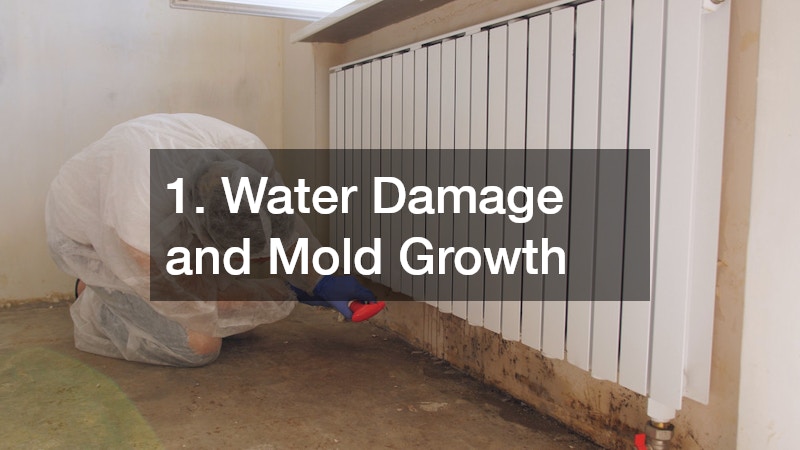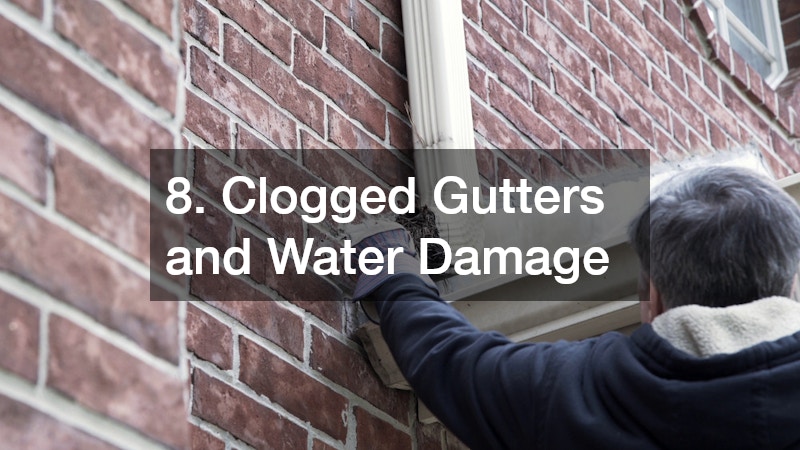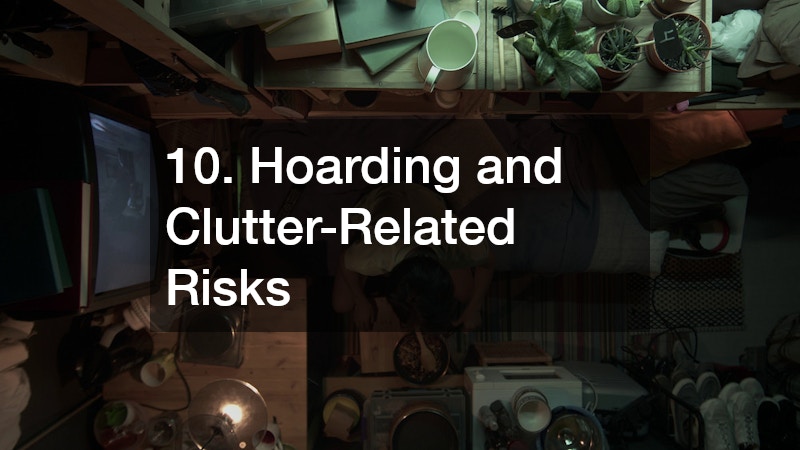10 Hidden Financial Dangers Lurking in Your Dirty House
Maintaining a clean home isn’t just about appearances—it has real financial and practical implications. Many homeowners underestimate how quickly neglecting regular cleaning can escalate into costly repairs, unexpected expenses, and even health issues. Dust, dirt, grime, and clutter don’t just create an untidy appearance; they can cause damage in ways that aren’t immediately visible. Over time, what starts as minor neglect can evolve into major problems that require emergency fixes, expensive maintenance, or full-scale replacements.
Homes that aren’t cleaned regularly are more vulnerable to moisture accumulation, mold growth, and structural damage. Hidden leaks, unaddressed spills, or accumulated dirt in hard-to-reach areas can silently compromise walls, flooring, and fixtures. Even small oversights can accumulate over months or years, affecting indoor air quality, the durability of flooring, and the efficiency of mechanical systems. Beyond the obvious aesthetic concerns, these issues can have a direct financial impact, leading to higher repair bills, reduced property value, and in some cases, health risks for your family.
This guide dives into ten hidden financial dangers that often arise when routine home maintenance and cleaning are neglected. Each section highlights a specific risk, explains why it matters, and offers actionable steps that homeowners can take to prevent or mitigate the problem. By identifying these often-overlooked hazards, you can save thousands of dollars, maintain a safe and healthy living environment, and protect the long-term value of your home.
1. Water Damage and Mold Growth

Water accumulation from leaks, condensation, or spills can quietly destroy structural elements of your home. Moisture that isn’t addressed promptly often leads to hidden mold growth. Mold not only poses serious health risks, such as respiratory problems and allergies, but it also triggers expensive repairs. Small leaks behind walls or under sinks may seem minor, but over time they can compromise drywall, insulation, and wooden framing.
Scheduling a professional mold inspection is a proactive way to catch problems before they escalate. Inspectors use specialized tools to detect moisture and mold growth in hidden areas, including behind walls, under flooring, and in attics. They provide guidance on remediation strategies, which may include containment, removal, and preventing further spread of spores.
Ignoring early signs of water damage often leads to more extensive repairs, costing homeowners thousands of dollars in restoration, demolition, and treatment services. In addition to structural damage, mold can reduce indoor air quality and create conditions for other issues like pests. Routine inspections, timely repairs, and proper ventilation can prevent these costs, protecting both your family’s health and the financial value of your home.
2. Deck Deterioration
Outdoor decks endure constant exposure to weather, and neglecting their maintenance can lead to costly structural problems. Moisture trapped under leaves or debris can accelerate wood rot, while insects can damage weakened areas. Even a minor crack or loose board can escalate into a safety hazard if ignored over time.
Professional deck contractors can identify early signs of deterioration, reinforce vulnerable areas, and apply protective coatings to prevent further damage. Regular inspections and refinishing not only prolong the life of the deck but also reduce the chance of expensive replacements. Maintenance can include pressure washing, sealing, and minor repairs to ensure the surface remains stable and attractive.
A well-maintained deck adds value to your property and offers a safe, enjoyable outdoor space. Routine upkeep also reduces liability risks if someone were to injure themselves on a neglected structure. Even if your deck looks fine at first glance, accumulated moisture or small defects can compromise its structural integrity. Partnering with skilled contractors ensures that issues are addressed before they become financial burdens.
3. Flooring Damage and Wear

High-traffic areas, spills, and dirt accumulation can gradually wear down flooring. Debris and moisture can seep into cracks, causing warping, staining, or damage to the subfloor. Ignoring these problems often results in expensive replacement rather than simple repairs. Over time, damaged flooring can also decrease your home’s aesthetic appeal and reduce resale value.
Visiting a reputable local flooring store can help you select durable materials and learn proper maintenance techniques for your specific flooring type. Professionals can recommend finishes, cleaning routines, and preventative measures tailored to the level of foot traffic and environmental conditions in your home. Proper care not only protects your investment but also keeps the flooring safe for your family.
Routine maintenance, including regular cleaning, polishing, and inspections, prevents minor damage from becoming major issues. Even small stains or scratches can worsen if left untreated, compromising both functionality and visual appeal. By investing in professional guidance and proper upkeep, homeowners can extend the life of their flooring, maintain a beautiful living space, and avoid costly repairs.
4. Vinyl Plank Floor Issues
Vinyl plank floors are popular for their durability and low maintenance, but they are still susceptible to damage from neglect. Dirt, spills, and improper cleaning techniques can cause warping, lifting, or discoloration. Once these issues occur, repairs can be expensive, and in some cases, sections of flooring must be replaced entirely.
Installing and maintaining vinyl plank floors correctly, along with consistent cleaning, helps prevent these problems. Professionals can provide guidance on the best cleaning products, methods, and protective coatings suitable for your specific flooring. Avoiding harsh chemicals or excess water is crucial to maintaining the floor’s integrity.
Regular inspections can reveal subtle signs of damage before they become costly. Early intervention—such as repairing small gaps, removing trapped debris, or replacing individual planks—can save homeowners from larger expenses. With proper care, vinyl plank floors remain both visually appealing and functional for many years, offering an economical alternative to more expensive flooring options.
5. Carpet Degradation
Carpets trap dirt, dust, allergens, and moisture that can deteriorate fibers over time. Embedded debris may cause unpleasant odors, staining, and even damage to the subfloor. Delaying routine maintenance accelerates wear, leading to premature replacement and higher costs. A poorly maintained carpet also impacts indoor air quality, creating health risks for occupants.
Regular carpet cleanings remove accumulated dirt and restore fiber resilience. Professionals use specialized equipment to deep-clean carpets, eliminate allergens, and address stains that ordinary vacuuming cannot remove. Proper cleaning prolongs the life of your carpet and maintains a safe, healthy environment.
Neglecting carpet maintenance may also create secondary problems, such as mold growth under damp carpets or damage to surrounding flooring. Scheduling cleanings periodically is an investment in both comfort and finances, as it reduces the likelihood of having to replace carpets prematurely. Additionally, a clean carpet enhances the overall aesthetic of your home, contributing to higher property value.
6. Air Quality and HVAC Efficiency
Accumulated dust, debris, and allergens in your home can impact air quality and HVAC performance. Over time, clogged systems may reduce airflow, forcing units to work harder and raising energy bills. Poor air circulation also exacerbates allergies and respiratory issues, creating indirect financial and health costs.
Professional duct cleaning removes built-up dust and contaminants, ensuring HVAC systems operate efficiently. Clean ducts not only improve airflow but also extend the lifespan of the system, reducing the risk of costly repairs or replacements. Regular maintenance helps maintain consistent temperatures, lower utility bills, and a healthier indoor environment.
Failing to address dirty ducts can result in long-term damage to HVAC components, including motors, fans, and filters. Preventative maintenance is far more cost-effective than emergency repairs. By scheduling duct cleaning routinely, homeowners protect their investment while enhancing comfort, safety, and energy efficiency.
7. Exterior Grime and Mold Build-Up
Neglecting exterior cleaning can lead to mold, algae, and dirt accumulation on siding, patios, and decks. These issues may damage paint, wood, and masonry over time, requiring costly repairs or replacements. Grime also diminishes curb appeal and can reduce your home’s resale value.
Professional powerwashing removes harmful buildup, restoring surfaces to their original condition and preventing further deterioration. Powerwashing can also reveal hidden damage, allowing homeowners to address repairs before costs escalate. Regular cleaning protects structural elements and maintains the home’s aesthetic appeal, which is particularly important for areas exposed to heavy rainfall or direct sunlight.
A well-maintained exterior also prevents secondary problems like moisture intrusion, which can lead to mold growth indoors. Investing in periodic powerwashing preserves your home’s integrity and ensures that minor issues don’t turn into major financial burdens over time.
8. Clogged Gutters and Water Damage

Clogged gutters lead to water overflow, damaging roofs, siding, and landscaping. Overflowing water may also seep into the foundation, causing structural damage that is expensive to repair. Ignoring gutters during routine maintenance can transform a minor inconvenience into a significant financial issue.
Hiring a gutter guard installer ensures proper water flow and reduces debris buildup. Professional solutions prevent frequent cleaning and minimize the risk of water damage to your home’s structural components. Well-maintained gutters protect the foundation, prevent erosion, and preserve landscaping, saving homeowners from costly repairs and restoration.
Routine inspections, combined with the installation of protective systems, are a cost-effective approach to preventing water damage. A proactive strategy ensures that your home remains structurally sound, safe, and protected from unexpected repair bills caused by overflowing or blocked gutters.
9. Drainage Problems
Blocked or poorly maintained drains can lead to backups, flooding, and damage to plumbing systems. Water accumulation can compromise flooring, walls, and even the foundation, leading to costly repairs if left untreated. Slow or clogged drains also create hygiene issues and unpleasant odors.
Professional drain cleaning helps maintain plumbing systems, ensuring water flows freely and preventing blockages. Technicians can identify potential issues, remove obstructions, and provide guidance for long-term upkeep. Regular maintenance minimizes the likelihood of emergency repairs and reduces the risk of property damage.
Failing to address drainage issues promptly can result in extensive structural repairs, mold growth, and damage to personal property. Proactive drain maintenance protects both your home and your budget, helping homeowners avoid unexpected expenses and maintain a safe, functional living space.
10. Hoarding and Clutter-Related Risks

Excessive clutter increases fire hazards, limits mobility, and can hide structural damage, leaks, or pest infestations. Hoarding conditions create significant financial and safety risks, often requiring specialized intervention to restore the home.
Professional hoarder cleanouts remove hazards, restore organization, and allow homeowners to inspect and repair hidden issues. These services ensure that safety standards are met while minimizing further damage to property. Reducing clutter also makes routine cleaning more manageable, preventing costly repairs and extending the life of flooring, furniture, and fixtures.
Addressing extreme clutter or hoarding tendencies is essential for maintaining a safe environment and avoiding costly surprises. Organized living spaces support better hygiene, prevent accidents, and contribute to the overall financial well-being of homeowners. Investing in cleanup services protects both your property and your peace of mind.
Neglecting routine cleaning can lead to hidden financial dangers that quietly accumulate over time. Small issues, such as water damage or unnoticed mold growth, can quickly escalate into expensive repairs. Flooring deterioration, clogged drains, and exterior grime often start as minor problems but can result in major costs if left unaddressed.
Engaging trusted professionals is one of the most effective ways to protect your home. A mold inspection can uncover hidden moisture issues before they spread and compromise indoor air quality. Experienced deck contractors help maintain outdoor structures, preventing wood rot and costly replacements. Visiting a local flooring store provides guidance on materials and care that extend the life of your floors.
Installing and maintaining vinyl plank floors correctly ensures they remain durable and attractive for years. Scheduling regular carpet cleanings removes trapped dirt and allergens that could otherwise cause long-term damage. Professional duct cleaning keeps your HVAC system functioning efficiently, improving airflow and reducing energy costs.
Routine powerwashing protects exterior surfaces from algae, mold, and accumulated grime, preserving both curb appeal and structural integrity. A qualified gutter guard installer prevents water damage by keeping debris out of your gutters. Periodic hoarder cleanouts eliminate excessive clutter that can hide damage or create safety hazards. Finally, professional drain cleaning keeps plumbing systems flowing freely and avoids emergency repairs.
Proactive maintenance reduces the likelihood of unexpected repairs, extends the life of your home’s features, and safeguards your financial investment. By recognizing the hidden costs of a dirty home and taking preventative action, homeowners can save thousands of dollars while creating a safer, healthier, and more enjoyable living environment for their families.

Post Comment